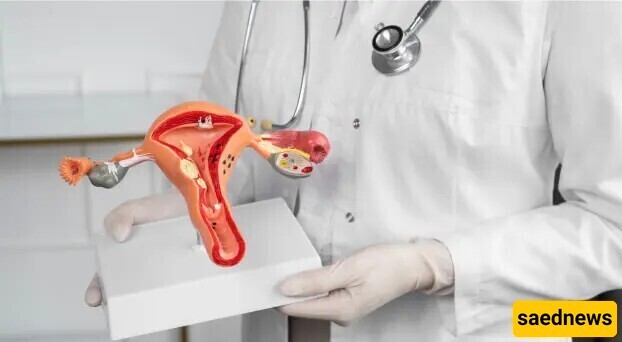Polycystic Ovary Syndrome (PCOS) is the most common disorder associated with chronic ovulation issues.

What causes lazy ovary syndrome (PCOS)?
lazy ovary syndrome often occurs in women of reproductive age, between 15 and 45 years, though its exact cause is unknown.
However, the following are considered the most likely causes of PCOS:
Excess weight:
Approximately 40 to 80 percent of women with PCOS have excess weight or a BMI over 30. Obesity is one of the main contributors to insulin resistance, which increases the risk of type 2 diabetes and PCOS.
Insulin resistance:
Around 70 percent of women with PCOS experience insulin resistance. Insulin is a hormone secreted by the pancreas to convert sugar from food into energy. When body cells fail to utilize insulin effectively, the pancreas produces more of it. Excess insulin stimulates the ovaries, increasing the production of male hormones and preventing ovulation.
Stress and anxiety:
When experiencing stress or anxiety, the body releases cortisol. This hormone elevates androgen levels, leading to ovulation issues.
Genetics:
PCOS has a hereditary pattern and can be passed down through family genes.
Thyroid disorders:
Hypothyroidism can contribute to ovarian laziness and exacerbate its symptoms.
Adrenal gland disorders:
Under chronic stress and high body weight, the adrenal glands produce more androgens, which can lead to PCOS.
Research suggests that most individuals with PCOS struggle with excess weight, highlighting the importance of lifestyle changes in managing the condition. Additional causes of PCOS include:
Presence of tumors in the brain
Chemotherapy
Tobacco use
Alcohol addiction
PCOS can present with varying symptoms in different women. Around 50% of individuals with this condition may not exhibit any symptoms or may experience less common signs.
Some women notice irregular menstrual cycles early on, while others become aware of the syndrome due to weight gain or difficulty conceiving. Below are the most common symptoms of ovarian laziness:
When ovulation does not occur, the uterine lining does not shed, leading to missed periods. Some women with PCOS may experience no periods at all or have fewer than 8 periods per year.
In women with PCOS, the uterine lining becomes thicker over time, leading to heavier periods and more severe bleeding after prolonged delays.
Over 70% of women with PCOS experience excessive, coarse, male-pattern hair growth. This hair typically appears on the face, chin, and areas such as the back, stomach, chest, and around the navel.
Elevated male hormones in PCOS increase skin oiliness, causing acne on areas like the face, chest, and upper back.
Approximately 80% of women with PCOS struggle with weight gain, which is linked to insulin resistance and elevated male hormone levels, worsening symptoms. Even minimal weight loss can restore ovulation and regular menstrual cycles.
PCOS can lead to dark patches in body folds, such as on the neck, groin, and under the breasts. This condition, called acanthosis nigricans, is often related to insulin resistance.
Since PCOS can lead to fertility issues, increased risk of endometrial cancer, cardiovascular diseases, and diabetes, it’s important to consult a gynecologist upon noticing symptoms, including:
Irregular periods (cycles longer than 35 days or shorter than 21 days).
No success in conceiving after a year of trying.
Symptoms of diabetes, such as excessive thirst, hunger, blurred vision, or unexplained weight loss.
Increased hair growth on the face and body.
If you have PCOS, it’s essential to regularly monitor for diabetes, high blood pressure, and other potential complications. Consult with your doctor for ongoing care and management.

